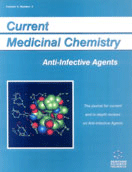Abstract
Hepatitis C virus (HCV) infection is a serious cause of chronic liver disease worldwide. Although a treatment of limited efficacy exists, there is an urgent need for potent antivirals that can specifically target the viral proteins that are essential for replication. We recently reported the discovery of BILN 2061, a selective and potent inhibitor of the HCV NS3 protease. When administered to HCV infected patients for two days, BILN 2061 produced an unprecedented and rapid decrease in viral load, thus demonstrating the first proof-of-concept for a new class of HCV antiviral. The BILN 2061 family of compounds was rationally designed from a peptidic substrate using dynamicsand structure-based strategies. In this review, we present an overview of the novel strategies that led to the BILN 2061 family of compounds. It includes the discovery of the original peptide as a lead, the identification of important substituents that directly contact the protease pocket, the determination of the free and protease-bound structure and dynamics features of the compounds, and the rational use of such data for medicinal chemistry purposes. Central to this was an ongoing effort to qualitatively elucidate the binding modes/roles of each substituent using a combination of data from NMR spectroscopy, structure-activity relationships, and X-ray crystallography. In addition to achieving the desired goal of initiating clinical trials with a potent inhibitor with good pharmacokinetic properties, the methodologies developed for targeting this unusual and difficult protease, which has a shallow and relatively featureless binding pocket, are expected to have general utility in other medicinal chemistry efforts.
Keywords: chronic hepatitis c, cirrhosis, hcv genotypes, replication assay, human hepatoma cell line, protease domain, nmr
 7
7

